What is a tattoo?
By: Erc Aln
What is a tattoo? It’s easy, right? Just a doodle on skin? Well, let’s delve a little more than skin deep and explore what a tattoo is beneath the surface.
A tattoo, quite simply, is pigment suspended within a healed surface wound in the dermis, the layer of dermal tissue under the epidermis. A needle grouping coated in tattoo “ink” is used to perforate the epidermis. The pigment is injected through the small perforations left behind by the needle groupings. It is left behind in the wound, just below the outer protective layer of skin. If the tattoo is too deep, it will spread throughout the fatty tissue beneath the dermis and cause “blow-outs” and excessive scarring. If it is too light, it will slough away as the tattoo heals.
After the tattoo is applied, the trauma coupled with the foreign pigment, triggers the immune system’s response. Then, a tiny life-long war begins under the surface of your skin. White blood cells, called phagocytes, charge into the area and envelope the pigment in the wound, much like a cool fantasy battle from Lord of the Rings. As with any wound, their job is to corral, devour and eject foreign material. Think of them as the immune systems little “trash bags”. These little guys gobble up the pigment, then die and flake away, shedding the damaged skin and some pigment along with it. This is why you must utilize adequate aftercare. With proper prescribed care, you’ll minimize the time and amount of phagocytes impacting the area, which decreases scabbing and preserves maximum pigmentation. During this initial healing period, the tattoo behaves much like a sunburn. After a few days of touch sensitivity, the scaling and flaking begins. This process is usually finished within 2 weeks, but we aren’t fully healed yet.
Over the next few weeks, after the epidermis has finished shedding, the dermis continues to mend and rebuild collagen. The fresh new skin cells solidify, returning the skin to a normal, now more artistic appearance! The next part is possibly the craziest part of all. During the healing, Macrophages take over the management of the area. If phagocytes are trash bags, Macrophages are the garbage men. They not only aid in the expulsion of pigment, they help keep it within it’s original boundaries. As tattoos age, they spread a little, fade a little with time. This is because the pigment lives in the dead bellies of the phagocytes and they move beneath the surface over the years, degrade and the pigment must be eaten by new phagocytes. So your tattoo fading over years, is actually your tattoo being absorbed and exfoliated simultaneously. Do you remember the scene from LoTR, where Frodo sees the dead bodies in the marshes? That’s your tattoo. Lots and lots of microscopic little dead dudes with bellies full of color, being corralled and exfoliated by some other dudes during the course of your life. That’s the primary reason you hear “bold will hold” in our industry. It implies that a tattoo full of clean and clearly saturated areas of pigment will remain so, where very small or fine detail could degrade over time “washing out” or blurring a tattoo.
There you have it. A tattoo is pigment suspended under the skin being held in place by the little critters that make up your body. I’ve taken some liberties in this article with scientific particulars, if you couldn’t tell. My aim with these articles is to give a better understanding of the process and industry in layman’s terms. I hope this article gives you a better understanding of what a tattoo is and helps your next aftercare process to be a more informed and aware one! Cheers!



